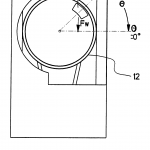The Real Truth about High Speed Hardmounts in Commerical Laundry
Have you noticed that we seem to be in a new arms race of sorts in the commercial laundry world? Companies are upping the G force levels to attempt to get an edge in the market, but what does this mean in reality for you, the person writing the check?
What is G-Force, Anyway?
 Great question! 1 G is defined as the acceleration due to gravity at the earth’s surface. In simple terms, this is the force you feel holding you to your chair when sitting. If you’re interested in seeing what G forces look like on people, there are a bunch of videos on YouTube of test pilots experiencing this effect in a G Force Simulator (the faces they make are hilarious!)
Great question! 1 G is defined as the acceleration due to gravity at the earth’s surface. In simple terms, this is the force you feel holding you to your chair when sitting. If you’re interested in seeing what G forces look like on people, there are a bunch of videos on YouTube of test pilots experiencing this effect in a G Force Simulator (the faces they make are hilarious!)
Why High Speed Extracts are Valuable
 If you watched either of the videos above, you saw the force of gravity being applied to a person. Usually, these training sessions are well below 10G so that there are no injuries (your heart has a hard time pumping blood against these forces). For comparison purposes, an old fashioned low speed front load washer extracts at 80G or so.
If you watched either of the videos above, you saw the force of gravity being applied to a person. Usually, these training sessions are well below 10G so that there are no injuries (your heart has a hard time pumping blood against these forces). For comparison purposes, an old fashioned low speed front load washer extracts at 80G or so.
As the G force during final extract increases, the remaining water is forced from the goods. So, the higher the G force in final extract, the less water there is left in the goods. If you are interested in saving time and money, that means there is less work for the dryer to do since less water left in the goods means shorter drying times.
A Brief History Lesson
 In the old days, a washer-extractor had a multi speed motor, multiple motors, or confusing arrays of clutches and gears in order to provide a wash speed and an extract speed. This all changed with the advent of the AC Inverter Drive, which allows a single motor to operate at virtually any speed and eliminates a tremendous amount of mechanical and electrical complexity.
In the old days, a washer-extractor had a multi speed motor, multiple motors, or confusing arrays of clutches and gears in order to provide a wash speed and an extract speed. This all changed with the advent of the AC Inverter Drive, which allows a single motor to operate at virtually any speed and eliminates a tremendous amount of mechanical and electrical complexity.
Inverters also brought new capabilities to the washer. Balance detection, now a staple in the industry, would not be possible (or at least affordable) without inverter drives. This important technology allows the machine to know whether it is safe to go to extract or not prior to the violent act that is the final spin.
In the year 1999, a group of enterprising engineers were awarded a patent for a process that measured the out of balance and automatically calculate how fast the machine could safely extract. This led to the first 300G hardmount washer. The 300G number was chosen because it was fairly easy to obtain. The higher the speed, the better the balance in the wash cylinder needed to be, so 300G was a good compromise and the machine could expect to reach this speed more often than not.
Enter the Non Engineers
 In the ongoing game of one-upmanship, a group of marketing types got together and said “why can’t it go faster than 300G?” The engineers replied that it could, but it would be less and less likely to achieve the speeds promised. Of course, it is unlikely that the sales people actually cared about any of this and just wanted a bigger number to brag about.
In the ongoing game of one-upmanship, a group of marketing types got together and said “why can’t it go faster than 300G?” The engineers replied that it could, but it would be less and less likely to achieve the speeds promised. Of course, it is unlikely that the sales people actually cared about any of this and just wanted a bigger number to brag about.
What Does All This Mean?
So is the fancy new 500G hardmount really a 500G machine, or is it just a regular 200G machine that will get to higher speeds once in a blue moon (or perhaps the last 10 seconds of extract)? And what happens if you need to have a consistent extract speed because you have an ironer? How does this variable speed extract affect the drying process?
All good questions! All high speed hardmount washers on the market today rely on the engineering magic described above. Different tricks are employed, but the game is the same. Well balanced loads will extract at higher speeds, but poor loads will go (much) slower. If you have an ironer, forget about this technology – the moisture content must be known to set the ironing speed, so softmounts are the best solution. If you have standard dryers, you’re also wasting your time. You’ll definitely need a dryer that can accurately sense the amount of water remaining in the goods and stop the drying cycle when all the water is removed, not before or well after. Otherwise, you’re just wasting time (and money on gas) as the goods will be dry and your hard earned cash is buying heat for the birds.
The Ideal Solution
What is a commercial laundry owner to do? Here’s a brief guide:
Do you care about saving energy and money? If the answer is yes, use high speed softmount washers paired with humidity sensing dryers. The softmounts will extract at the same high speed every time, and the humidity sensing dryers will stop when the load is dry. You’ll also be able to go straight from the washer-extractor to the ironer without first conditioning in the dryer, eliminating multiple handling of the goods, saving more time and money.
Do you care about installation costs? Again, the winner is softmounts. The machine can be installed and operate as soon as the bolts are tight and the utilities connected. You won’t have to wait for the concrete to cure like hardmounts.
Do you only care about the lowest price? In this case, pick a 200G high speed hardmount without all of the fancy (and somewhat ridiculous) high speed claims. A 200G machine will extract almost 40% more water than an 80G machine, greatly increasing your drying efficiency and saving you money in the long run. This is somewhat like going from a car that gets 10 miles per gallon to one that gets 20 mpg. The bang for your buck is very high.
An educated buyer is the best kind of buyer and ensures that you will get the commercial laundry machine that is best suited to your needs at the time.
Comments